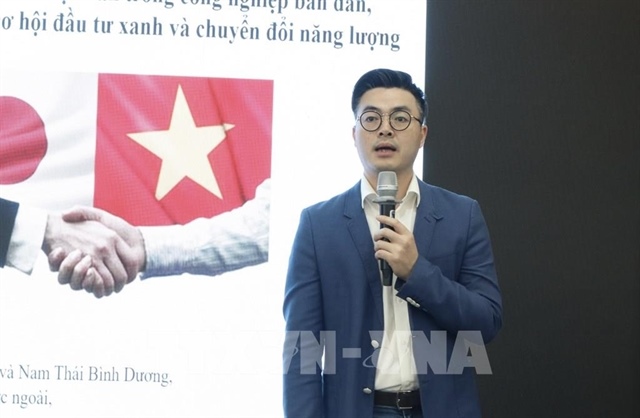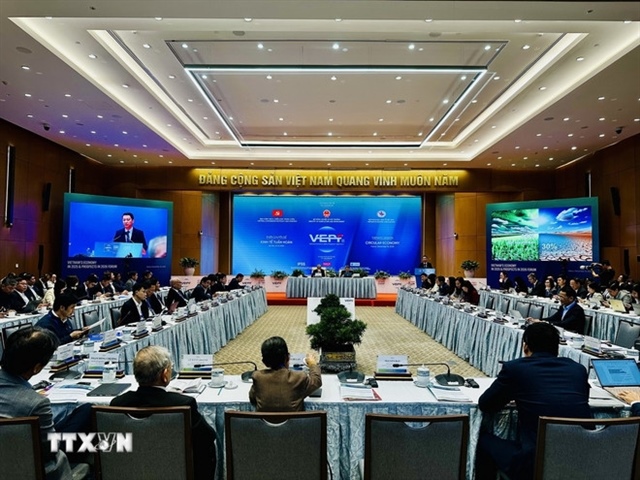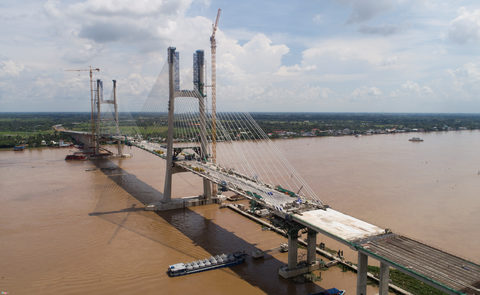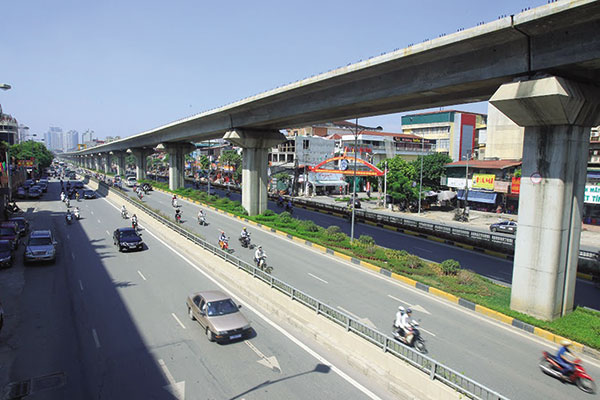Energy efficiency turns SMEs into success story
Energy efficiency turns SMEs into success story
Amid the spiralling ramifications of climate change in Vietnam, energy-saving and CO2-reducing technologies have proven an inevitable trend for small- and medium-d enterprises.
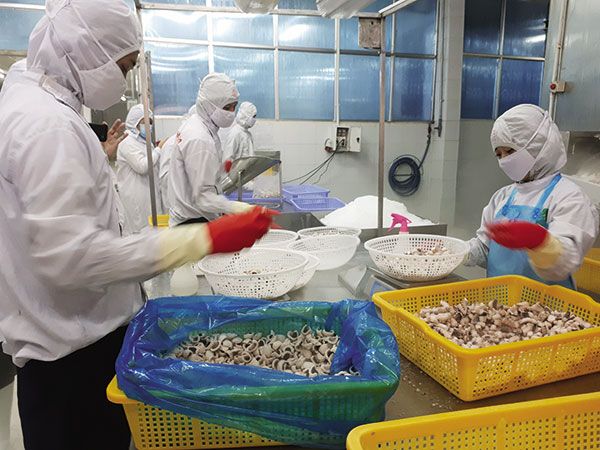
Visiting Minh Dang, a seafood processing firm in the Mekong Delta province of Soc Trang, on a sunny day in late September, I was impressed by recent improvements in the firm’s business performance and energy efficiency thanks to production modernisation.
Nguyen Thi Cam Nhung, CEO of Minh Dang, said, “Backward technologies caused energy loss and emitted huge volumes of CO2 into the environment, which resulted in low economic efficiency.”
Since being selected in 2015 to join the Green Investment Facility (GIF) of the Low Carbon Transition in Energy Efficiency, a co-operative programme between the Vietnamese and Danish governments, Minh Dang has taken out a bank loan of VND3.6 billion ($163,636) to modernise its production lines. The Danes guaranteed 50 per cent of the loan amount.
In the production area where a modern production assembly whirs, condensing units in a range of s hang everywhere, reminders of the inefficient production of the past. The upgrade has produced unexpectedly positive results that Nhung and her staff are still in awe of.
“The upgrade helped the firm save 30 per cent in electricity costs, while cutting 495.87 tonnes of CO2 emissions a year,” said Nhung with a happy smile.
Along with energy efficiency, Minh Dang has also seen major improvements in business performance thanks to an increase in product quality and capacity, as well as cuts in production and maintenance costs.
“We saw our capacity increase 40 per cent a year, with the volume of exports ascending to 3,900 tonnes in 2016 from 2,700 tonnes in 2015. As a result, the firm made a profit of VND7.9 billion ($359,000) on revenue of VND406 billion ($18.45 million) last year, up from VND5 billion ($227,270) and VND355 billion ($16.14 million) in 2015, respectively,” Nhung said.
The good business performance has taken another leap in the first eight months of this year, as Minh Dang fetched revenue of VND369.5 billion ($16.79 million) and a profit of VND9 billion ($409,090).
“With GIF, we can now get access to difficult markets, including the US and Japan,” she said.
SMEs – the key to green growth
Minh Dang is one of the 62 small- and medium-d enterprises (SMEs) in 20 cities and provinces benefiting from the GIF project. My Vien and Tan Tien, located in the central region, are the two other examples for improved awareness among SMEs on the importance of energy efficiency.
SMEs now make up over 90 per cent of all companies operating in the Vietnamese economy. They have huge potential for saving energy, and can greatly contribute to the country’s green growth path.
“The GIF project provides a wide range of approaches to reaching out to SMEs,” said a Danish expert. “We realise these enterprises have huge potential for energy efficiency, but they also face a lot of barriers. One of them is difficult access to capital. At the same time, they also don’t know very much about the actual possibilities they have to reduce their energy consumption and save money on energy.”
Together with Minh Dang, the positive changes at My Vien Co., Ltd. and Tan Tien are obvious evidence for the potential of energy efficiency among SMEs.
Established in 2010 as a civil construction company in the central province of Ninh Thuan, My Vien has focused on the production of cement bricks since 2013. In June 2015, the firm invested in its first assembly line.
The weaknesses of its former “tuynel” production line include the large area required (five to 10 hectares), huge investment capital (VND20 billion – $909,090 – for an annual capacity of 30-45 million units), a great amount of energy consumption, and a big need for manpower. The company decided in April 2016 to switch production to unbaked bricks by investing in a second production line with support from GIF, at a cost of VND6.2 billion ($281,818).
With GIF, My Vien got a loan of VND8 billion ($363,636) from the Bank for Investment and Development of Vietnam, with a 50 per cent guarantee for the bank loan coming from Denmark.
A point of differentiation for this new operation is that it acquires its inputs for free – the fly ash-waste from Vinh Tan thermo-power plant to produce unbaked bricks. With a modern new line and an inexhaustible amount of local wind and sun, the production time was shortened to five to seven days instead of 10-15 days in the past.
With this investment in its unbaked brick production line, My Vien can reduce CO2 emissions by 41 per cent compared to the tuynel production line. The line’s energy efficiency and CO2 emission reduction is expected to reach 84 per cent and 2,987 tonnes a year, respectively.
This mode of production is in line with the government’s policy of promoting the production and use of unbaked bricks. This investment will contribute to increasing the proportion of unbaked bricks to 40 per cent of the country’s total volume of bricks, as targeted by the government for 2020.
“With many advantages, we will invest in the third production assembly line of this kind by the end of 2017, to increase capacity to meet growing local market demands,” said Tran Ky Phong, director of My Vien.
The facts that many SMEs are applying modern technology to save energy, cut CO2 emissions, and increase operational efficiency shows that SMEs are ready to move towards green development if they get financial support.
“GIF has created a driving force for us to change. Like Minh Dang, many other SMEs are ready to change if they get financial support,” Nhung said.
An inevitable trend
At a September conference called “Sustainable and Climate-resilient Development for the Mekong Delta”, Minister of Planning and Investment Nguyen Chi Dung said that climate change in the Mekong Delta has had diverse complications, causing negative impacts to regional sustainable development, production, and people’s lives.
Looking back to 2016 and early 2017, fluctuations of the weather have become more critical and challenging for the country. In 2016’s dry season, droughts hit many areas in the south and centre of the country because of a decrease of 30-40 per cent in rainfall.
In addition, poor river flow has contributed to salt intrusions one month earlier than usual in the areas by river mouths in central Vietnam and the Mekong Delta. In the Mekong Delta, salt water intruded 80-100 kilometres or more in some areas. This has made for a serious lack of fresh water for domestic use and production activities.
Dung noted the importance of improving the awareness among locals and transforming production models towards efficiency, and making them adaptable to climate change.
There will be a long journey for Vietnam to encourage more SMEs to change, but it has to do so in co-operation with the international community.
The Danish-Vietnamese programme on the Low Carbon Transition in Energy Efficiency in Vietnam (LCEE), signed in 2012, has proven successful for SMEs. It came about through a national target programme on energy efficiency that has been operating in Vietnam since 2005.
“We have seen in Denmark, where we have promoted energy efficiency in industries for many years, that it is very helpful to provide some incentive products over a period of time for introducing and mainstreaming energy-efficient technologies, and then these technologies will become mainstream and the whole industry will adopt them. So to make these changes requires some money, but that money will come back to the economy,” the Danish expert said.
“One of the things related to energy efficiency that we encourage the government to do is to be able to collect funding to promote energy efficiency in the future,” he said.




